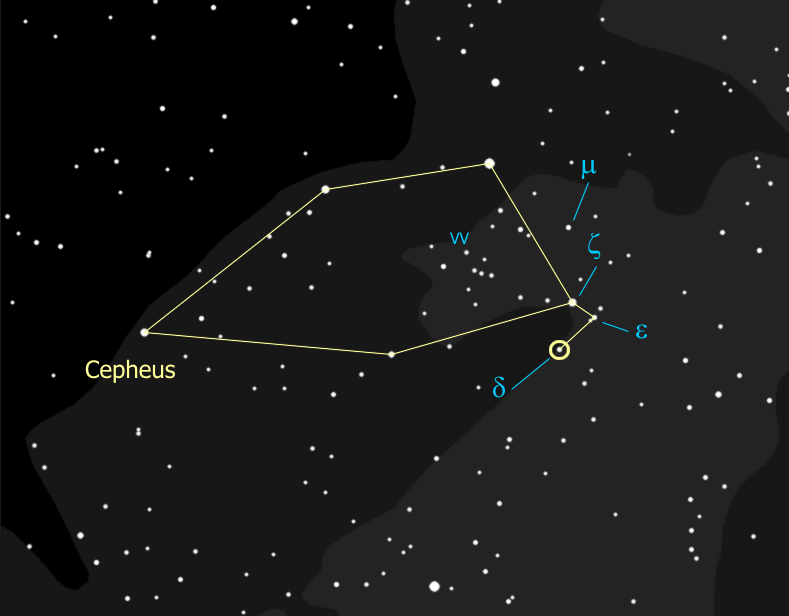
The Constellation Cepheus


|
The Constellation Cepheus |

|

Cepheid stars have gotten to just the right mass to be unstable - so the whole star is pulsating, the surface of the star is actually rising and falling, with a rhythm that is so precise you could set your watch to it. It was discovered in 1912 that this rhythm depends directly on the true brightness of the star -- the brighter the star, the longer the time between peaks.
Now when a star is closer to us, it seems brighter. When it's farther away it seems dimmer. So if we know the true brightness of the star, and we measure its apparent brightness, we can figure out the distance of the star. If the star is part of a cluster or a galaxy, this tells us the distance to that entire body of stars. This has been used to find the distances to globular clusters, other galaxies and even our distance from the center of our own galaxy -- 28,000 light years.
In 1924, Edwin Hubble (yes, the telescope is named after him) used Cepheids to measure the distance to the Andromeda 'nebula' (2.3 million lightyears) and proved that it is not another solar system in formation but an 'island universe', another galaxy like our own. This was an extraordinary declaration about the structure of the universe back in 1924. Our whole system of measurement of the universe is built upon the Cepheids as our basic yardstick.
Yep so that's how we figured out how far we are from the center of our galaxy. We're looking in the wrong direction to see the center of our galaxy. For that we need to swing around to the constellation Sagittarius -- to the south -- which is our next stop on the tour.
 Back to Virgo
Back to Virgo
|
 Go to Summer Index
Go to Summer Index
|
 On to Sagittarius
On to Sagittarius
|
Your questions and comments regarding this page are welcome.
You can e-mail Randy Culp for inquiries,
suggestions, new ideas or just to chat.
Updated 11 November 2011